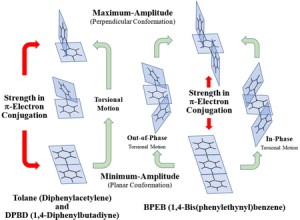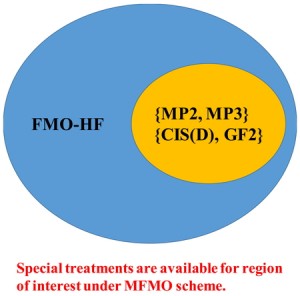[Published online Journal of Computer Chemistry, Japan Vol.23, 9-12, by J-STAGE]
<Title:> キャリアの視点から見た有機太陽電池の発電機構の考察
<Author(s):> 成島 和男, 藤笠 舜大, 岡田 直之
<Corresponding author E-Mill:> narushim(at)ube-k.ac.jp
<Abstract:> Organic thin-film solar cells, which have attracted attention as a renewable energy source in recent years, provide important benefits of being light weight, flexible, inexpensive, and produced from a virtually inexhaustible resource. This report explains the power generation principle of organic thin-film solar cells by particularly addressing the movement of conduction electrons and holes, based on knowledge introduced in a paper and letters presented at this conference, augmented with findings from the calculation results reported here. The following important findings must be considered. (1) Regarding the bimolecular system of phthalocyanine and fullerene C60, even in the configuration calculated for this study, some parts of the phthalocyanine molecule had low probability of electron cloud existence. (2) For this configuration, a change was found in the electronic state in the excited state compared to the ground state. The power generation mechanism of organic thin-film solar cells was considered from the carrier perspective.
<Keywords:> Organic thin-solar cells, Quantum chemistry calculations, Electron cloud, Power generation mechanism, Carrier perspective.
<URL:> https://www.jstage.jst.go.jp/article/jccj/23/1/23_2024-0004/_article/-char/ja/
<Title:> キャリアの視点から見た有機太陽電池の発電機構の考察
<Author(s):> 成島 和男, 藤笠 舜大, 岡田 直之
<Corresponding author E-Mill:> narushim(at)ube-k.ac.jp
<Abstract:> Organic thin-film solar cells, which have attracted attention as a renewable energy source in recent years, provide important benefits of being light weight, flexible, inexpensive, and produced from a virtually inexhaustible resource. This report explains the power generation principle of organic thin-film solar cells by particularly addressing the movement of conduction electrons and holes, based on knowledge introduced in a paper and letters presented at this conference, augmented with findings from the calculation results reported here. The following important findings must be considered. (1) Regarding the bimolecular system of phthalocyanine and fullerene C60, even in the configuration calculated for this study, some parts of the phthalocyanine molecule had low probability of electron cloud existence. (2) For this configuration, a change was found in the electronic state in the excited state compared to the ground state. The power generation mechanism of organic thin-film solar cells was considered from the carrier perspective.
<Keywords:> Organic thin-solar cells, Quantum chemistry calculations, Electron cloud, Power generation mechanism, Carrier perspective.
<URL:> https://www.jstage.jst.go.jp/article/jccj/23/1/23_2024-0004/_article/-char/ja/


